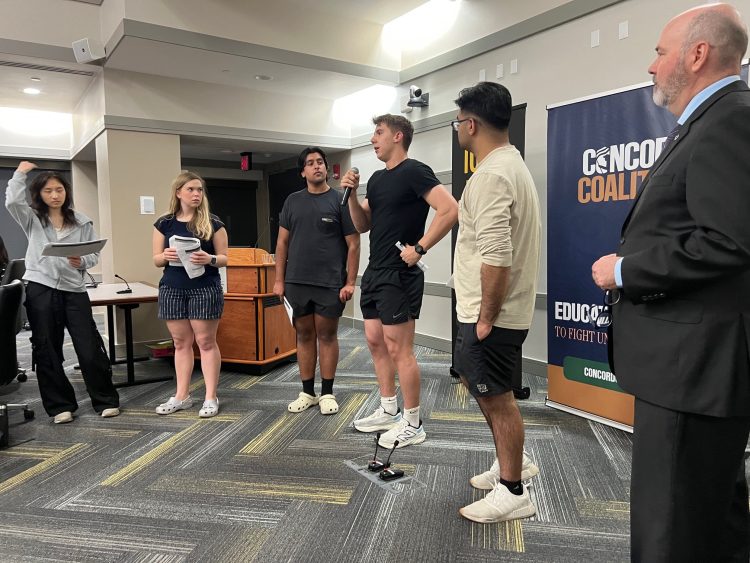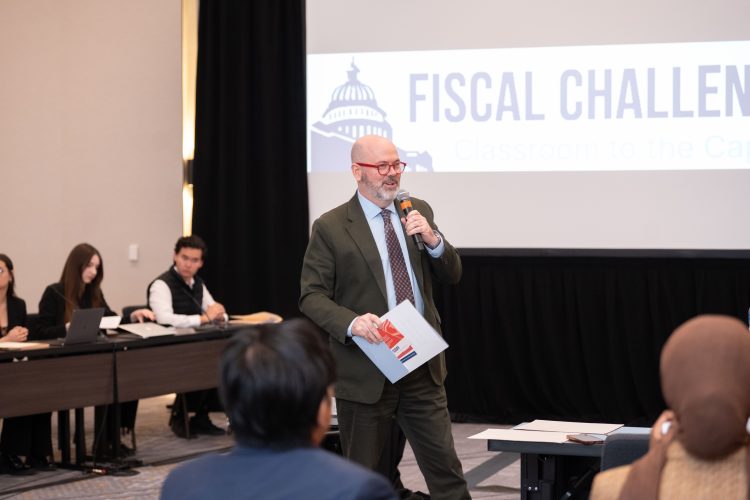I. Introduction
The State Children’s Health Insurance Program (SCHIP) is a joint federal-state program that provides health care for children in families with income that is modest but too high to qualify for Medicaid. Approximately 6.6 million children were enrolled in SCHIP in fiscal year 2006, as were about 670,000 adults. The FY 2008 budget resolution allows for a $50 billion expansion in SCHIP as long as the new spending is offset through both the 5-year and 10-year budget windows.
I. Introduction
The State Children’s Health Insurance Program (SCHIP) is a joint federal-state program that provides health care for children in families with income that is modest but too high to qualify for Medicaid. Approximately 6.6 million children were enrolled in SCHIP in fiscal year 2006, as were about 670,000 adults. The FY 2008 budget resolution allows for a $50 billion expansion in SCHIP as long as the new spending is offset through both the 5-year and 10-year budget windows.
With the program set to expire on September 30th, lawmakers must act quickly to accommodate reauthorization and address competing policy goals while at the same time adhering to PAYGO principles. Major differences between the respective bills passed by the House (H.R. 3162) and Senate (S. 976) could make for a very difficult conference negotiation and test the willingness of Members to abide by their new PAYGO rules — both in fact and in spirit.
II. Background
The Balanced Budget Act of 1997 (BBA) established SCHIP. In general, this program allows states to cover low-income children (under age 19) with no health insurance in families with income that is above Medicaid eligibility levels. States were given the option of enrolling targeted children in existing Medicaid programs, creating a new, separate program, or a combination of both.
Just as states have some discretion with setting eligibility levels for Medicaid, states also have flexibility in establishing SCHIP eligibility rules. States may set the upper income level for their SCHIP population as high as 200 percent of the Federal Poverty Level (FPL), or if the applicable Medicaid income level for children was at or above 200 percent FPL prior to SCHIP, the income threshold may be raised an additional 50 percentage points above that level. Table 1 illustrates the FPL by family size and Table A in the appendix summarizes the maximum income eligibility thresholds for Medicaid and SCHIP, by state.
Table 1. 2007 Federal Poverty Guidelines
Family Size |
Annual Income as a Percent of Poverty | |||
| 200% | 250% | 300% | 350% | |
| 1 | $20,420 | $25,525 | $30,630 | $35,735 |
| 2 | $27,380 | $34,225 | $41,070 | $47,915 |
| 3 | $34,340 | $42,925 | $51,510 | $60,095 |
| 4 | $41,300 | $51,625 | $61,950 | $72,275 |
| 5 | $48,260 | $60,325 | $72,390 | $84,455 |
| 6 | $55,220 | $69,025 | $82,830 | $96,635 |
| 7 | $62,180 | $77,725 | $93,270 | $108,815 |
| 8 | $69,140 | $86,425 | $103,710 | $120,995 |
| Note: Applies to all states and the District of Columbia, except Alaska and Hawaii | ||||
| Source: US Department of Health and Human Services as published in the Federal Register on January 24, 2007 | ||||
Financing for SCHIP is provided through a federal-state partnership. The federal government allots annual grants to states based on a formula that takes into account the number of children in low-income families in each state, the number of such children that are uninsured, and wages in the health services sector in the state relative to the national average. To encourage states to participate in SCHIP, the federal government contributes more – on a per capita basis – than it does for Medicaid. [1] States must provide matching funds to access their federal allotments and have up to three years to spend those allotments. Funds that are not spent within three years are redistributed to states that have exhausted their allotments.
Nearly $40 billion has been spent on SCHIP between fiscal years 1998 through 2007 (see Table 2). Because implementation of SCHIP occurred over several years, initial spending was low and many states had unspent balances at the end of 2002. As programs have matured, however, some states have exceeded their federal allotment – a trend expanding to more and more states.[2] As a result, Congress has acted twice to provide additional stop-gap funding.[3]
Table 2. Allotments and Spending under SCHIP
| Fiscal Year | SCHIP Allotments(Millions) | Federal Outlays(Millions) |
| 1998 | $4,235 | $122 |
| 1999 | $4,247 | $922 |
| 2000 | $4,249 | $1,929 |
| 2001 | $4,249 | $2,672 |
| 2002 | $3,115 | $3,776 |
| 2003 | $3,175 | $4,276 |
| 2004 | $3,175 | $4,645 |
| 2005 | $4,082 | $5,089 |
| 2006 | $4,365 * | $5,452 |
| 2007 (Est.) | $5,040 | $5,656 |
| * Includes additional funding from the Deficit Reduction Act of 2005 | ||
| Source: Congressional Budget Office | ||
According to CBO, SCHIP has significantly reduced the number of children living without health insurance. The uninsurance rate of children living in families with income between 100 percent and 200 percent of the federal poverty level fell from 22.6 percent in 1996 to 16.9 percent in 2005. In contrast, the uninsurance rate among children in higher income families remained relatively stable over the same time frame.
There is some debate, however, that SCHIP is “crowding out” private insurance. In some states, SCHIP provides an alternative source of coverage that is less expensive and provides a broader range of benefits than private insurance. As a result, some evidence exists that some parents who otherwise would have enrolled their children in private plans are switching coverage to SCHIP. Measuring the substitution effect, however, is difficult and studies have produced wide-ranging results that are dependent on the data and methodologies employed.
CBO estimates that maintaining the states’ current programs under SCHIP would require additional net funding in excess of the baseline of $8 billion between 2007-2012 and $28 billion between 2007-2017.[4] CBO assumes these estimates incorporate increases in the number of enrollees as well as increases in health care spending per enrollee but assumes no change in the design and operation of the states’ programs (eg, no expansion in eligibility, benefits or outreach).[5]
III. Is SCHIP an Entitlement?
The law creating SCHIP does not establish an individual entitlement to benefits, but it does entitle the states with approved SCHIP plans to pre-determined federal allotments. This is in contrast to Medicaid where targeted low-income children are entitled to the benefits offered under that program dictated by Medicaid law.
However, for scoring purposes, SCHIP is categorized as mandatory spending and pursuant to the BBA, CBO is required to assume that SCHIP will continue operating at it’s last appropriated level (approximately $5 billion). Thus, even without reauthorization, CBO must assume in its budget baseline mandatory spending on SCHIP equal to $5 billion per year.
IV. Current Proposals
A. The President’s FY 2008 Budget
The President’s Fiscal Year 2008 budget proposes increasing SCHIP funding by $4.8 billion to $30 billion total spending over five years. It re-targets funding at uninsured children in families with incomes under 200 percent of the federal poverty level by reducing the federal match to states with programs that cover children in families above this income level.[6] Lastly, states would have only one year to spend their allotments. Any unspent balances after one year would be redistributed to states that have exceeded their allotments.
According to CBO, although the President’s proposal reauthorizes SCHIP at Fiscal Year 2006 levels, it is not sufficient to maintain coverage for current enrollees. As a result, CBO expects that 800,000 people would lose health insurance without increased funding.
The White House has threatened to veto any SCHIP reauthorization that spends more than the President’s original budget. Moreover, the President considers any enhancement of SCHIP to be a “backdoor expansion of government-run healthcare” and instead supports expansion of coverage that relies on individual healthcare tax credits to purchase private insurance.
B. The Senate Bill (S. 976)
On August 2nd, the Senate passed a $35 billion expansion of SCHIP with strong bipartisan support, including18 Republicans – enough to override a presidential veto.
Specifically, the Senate proposal would:
- Fund the expansion of SCHIP with an increase in the tobacco tax. The Senate bill includes $35 billion in new spending over five years financed largely with a 61-cent increase in the federal tobacco tax (plus other smaller revenue measures).
- Establish higher income thresholds. States would be permitted to enroll children in households with incomes up to 300 percent of the federal poverty level (up from 200 percent).
- Reduce reimbursements to states that use SCHIP funds for those above the threshold. States that provide coverage for children in families with income in excess of 300 percent of the poverty level would have their reimbursements reduced to the rates used to reimburse Medicaid beneficiaries.
- Phase-out coverage of adults. The Senate bill prohibits approval or renewal of waivers to provide coverage for non-pregnant, childless adults. States with existing waivers would be permitted to extend coverage through FY 2009, after which this population must be moved to Medicaid.
While expanding health insurance to children is a laudable goal, The Concord Coalition is concerned about three aspects of the Senate legislation:
- The bill fails to target new entitlement spending at those most in need. SCHIP originally was intended to cover uninsured children in families with modest incomes but too high to qualify for Medicaid. The 1998 law established 200 percent of the federal poverty level as the upper income bound of the targeted population. A sizeable number of children in this category remain uninsured. But the Senate bill would allow some states to expand coverage to children in families earning 300 percent of the FPL.
- Although the Senate proposal adheres to the strict definition of PAYGO, it violates the spirit. First, the bill includes a budgetary gimmick that hides the true cost of the legislation. To avoid exceeding the parameters set forth by the budget resolution and the amount of designated offsets, the Senate bill artificially “sunsets” the expansion in SCHIP spending by dramatically reducing outlays in 2012 and then providing a special one-time appropriation to make up the difference (see Table 3). CBO incorporates the reduced outlays in 2012 as part of the baseline but not the one-year “special” appropriation. This “sunset” maneuver has been used in the past to hide the likely cost of tax cuts by pretending that they go away. It was bad policy for tax cuts and it is bad policy for spending increases.
Table 3. Changes in Direct Spending of Senate SCHIP Reauthorization
| FY08 | FY09 | FY10 |
FY11 |
FY12 | FY13 | FY14 | FY15 | FY16 | FY17 | 08-12 | |
| SCHIP outlays | 2.3 | 4.2 | 6.1 | 7.3 | 8.4 | 0.4 | (0.7) | (0.6) | (0.4) | (0.3) | 26.5 |
| Medicaid outlays 1 | (0.3) | 0.3 | 1.2 | 1.6 | 1.8 | 4.6 | 6.1 | 7.1 | 7.7 | 8.4 | 4.7 |
| Other outlays | 0.8 | 0.5 | 0.6 | 0.7 | 0.7 | 0.8 | 0.8 | 0.9 | 0.9 | 0.9 | 3.4 |
| Total change in direct spending | 2.7 | 5.1 | 8.0 | 9.5 | 11.0 | 5.8 | 6.2 | 7.3 | 8.2 | 9.0 | 36.3 |
| 1 Medicaid outlays due to interactions with SCHIP outlays shown above.Source: Congressional Budget Office | |||||||||||
Second, the Senate legislation mismatches an expanding commitment to health care coverage, which tends to grow more expense over time, with a revenue source that tends to decline over time. With the exception of periodic increases in the tax rate, tobacco tax revenue has fallen nearly every year since 1980 (see Figure 1). Eventually, under the Senate proposal, SCHIP will require additional funding beyond what can be provided by the proposed increase in the tobacco tax.
- The federal government’s commitment to provide health care is expanded without any meaningful cost control. It is well established that rising health care costs represent the biggest spending challenge in the coming years. Yet, in this bill SCHIP expansion is wholly offset with a tax increase. There is no concomitant reform that would control costs. While this trade-off is consistent with PAYGO, it simply postpones needed cost saving reforms and indeed sets the bar for offsets even higher in future years.
Figure 1. Absent Periodic Tax Increases, the Tobacco Tax is a Declining Revenue Source
C. The House Bill (H.R. 3162)
The House-passed bill is much broader in scope, linking SCHIP expansion with Medicare reforms. Specifically, the SCHIP provisions of the House-passed bill would:
- Authorize $81 billion in new spending over five years (FY08-12) including $47 billion for the expansion of SCHIP, $14 billion to enhance Medicare benefits for rural recipients, and $19 billion to stave off scheduled cuts in Medicare physician payments.
- Establish additional incentives to encourage states to enroll children in SCHIP and Medicaid. Aside from the already-enhanced federal matching grants to states for SCHIP programs, the House proposes to reward states that enroll children in SCHIP and Medicaid above projections. These “bonus” or incentive payments add $11 billion over five years. The cost over 10 years is $15 billion due to a “sunset” provision.[7]
- Offset new spending with a 30/70 combination of tax increases and spending cuts. The House proposal offsets new spending with a 45-cent tobacco tax increase and permanent reductions in reimbursements for Medicare HMOs (see Table 4).[8]
Table 4: Financing the House-Passed Bill (HR 3162)
| $ Billions | FY08-12 | FY08-17 |
| New spending SCHIP reauthorizationMedicare benefits improvementsReversal of physician payment cutsOtherSubtotal: | 47.414.319.34.085.0 | 128.750.265.35.0250.8 |
| Reductions in spending Medicare Advantage (HMOs) Other Medicare Subtotal | 50.19.459.5 | 157.025.9192.9 |
| Total change, mandatory spending | 25.5 | 57.9 |
| New revenue | 28.1 | 58.1 |
| Financing Percent-new revenuePercent-reductions in spending | 33%*70% | 23%77% |
| *This column rounds to more than 100% financing because the combination of tax increases and spending reductions more than compensate for the increase in new spending.Source: Congressional Budget Office | ||
Despite its higher price tag, the House bill is more credible and transparent in adhering to PAYGO than its Senate counterpart. While the House bill employs a sunset of the bonus payments to help comply with PAYGO, it does not go as far as the Senate in using this mechanism to mask likely costs. Moreover, the House sunset has a plausible, if unlikely, rationale. In theory, if states are spurred by the incentives to enroll most of those eligible they will no longer be necessary. The more important distinction, however, is that the House bill makes a hard choice on cost control – shifting resources from healthcare for seniors in Medicare HMOs to healthcare for children. In this forthright application of PAYGO principles, the House bill demonstrates commendable political leadership.
That said, the House bill is hardly a panacea for the generation tidal wave that threatens to swamp the federal budget. For one thing, it is conspicuously silent on the issue of eligibility, adhering to current law allowing states great flexibility in determining income and thus permitting some states to use income “disregards” to qualify families with income as high as 350 percent FPL for SCHIP.[9] Moreover, the House-passed bill makes only moderate attempts to curb the enrollment of childless adults. All of this could move the program away from its original structure of a capped block grant and towards an open-ended entitlement.
The concept of “bonus” payments for enrolling beneficiaries is also questionable. States already receive enhanced federal matching grants for SCHIP beneficiaries to encourage states to enroll children in SCHIP.There is little evidence that adding more “sweeteners” will be an effective strategy and the policy is costly with or without a sunset.
Even more troubling is the House bill’s little-noted repeal of the Medicare “trigger.” As part of the law creating the Medicare prescription drug benefit (the Medicare Modernization Act, or MMA), lawmakers established a trigger designed to warn officials of Medicare’s growing impact on the federal budget. The trigger is activated whenever the Medicare Trustees predict in two consecutive years that Medicare spending would exceed 45 percent of total program outlays. The trigger requires the President to submit a legislative proposal responding to the warning and demands that Congress act upon the language in an expedited fashion.
The Medicare trigger is an important tool in prodding lawmakers to acknowledge and address the pressing need for reform.[10] Indeed, this year’s Medicare Trustees report activated the trigger and unless the trigger is repealed, President Bush is expected to submit his response to the policy warning with his FY 2009 budget blueprint.
V. Concord Perspective
The House and the Senate have produced two very different approaches to SCHIP reauthorization, and reconciliation of the two bills will prove a challenge for conferees (see Table 5). The price tag of the House bill and its reductions in Medicare spending threaten the fragile bipartisan consensus in the Senate. Similarly, the Senate tobacco tax increase – 41 percent higher than the House bill – will be a bitter pill for House members in tobacco-sensitive districts. As the two chambers hammer out a compromise, Concord urges Congress to:
- Re-focus SCHIP on those in need. The budget simply cannot sustain – nor should it – another middle class entitlement. Reauthorization should focus new spending to cover children in families earning less than 200 percent of the federal poverty level.
- Adhere to the spirit and principles of PAYGO by matching any expansion in SCHIP with realistic tax policy or concomitant spending reductions in other mandatory spending programs. Budget gimmicks that hide claims on future general revenues should be rejected in favor of a forthright approach to identifying and quantifying spending priorities.
- Use the reauthorization of SCHIP – a bipartisan goal – to lay a cornerstone for entitlement reform.SCHIP reauthorization has broad support in both chambers. Lawmakers should use this “spoonful of sugar” and pair SCHIP reauthorization with cost saving reforms of other health programs. The House bill attempts this by pairing SCHIP reauthorization with reductions in Medicare outlays.
- Preserve the Medicare trigger, or replace it with something equally as potent. In today’s highly charged political climate, lawmakers need to be reminded of their obligations to future generations as well as today’s voters.
Table 5. Bill Comparison
| POTUS | Senate | House* | |
| Outlays ($B)SCHIP-onlyFY08-12FY08-17Other spendingFY08-12FY08-17Total new FY08-12FY08-17 | $4.2$9.7n/an/a$4.2$9.7 | $28.6$27.9$6.6$43.1$35.2$71.0 | $47.4$128.7($21.8)($70.7)$25.6$58.0 |
| Offsets ($B)FY08-12FY08-17 | NoneNone | $36.1$72.8 | $28.1$58.1 |
Allotment formula |
Adopts more efficient formula to reduce unobligated balances | Creates new formula that allocates funding to states based on FY 2007 spending, indexed for growth in health care costs and child population | Creates new formula that allocates funding to states based on FY 2007 spending, indexed for growth in health care costs and child population |
| Unobligated balances |
One-year availability of allotments after which funds are redistributed to other states |
Two-year availability of allotments after which funds are redistributed to other states | Two-year availability of allotments after which funds are redistributed to other states |
| Enrollment incentives |
Maintains current law enhanced Federal matching grant for SCHIP enrollees |
Establishes “incentive pool” to reward states (above enhanced Federal SCHIP match) for enrollment above baseline. Cost: $2.7 billion (FY08-12); $8.4 billion (FY08-17) | Establishes a bonus program that rewards states (above the enhanced SCHIP match) for enrollment above baseline estimates.Cost: $11 billion (FY08-12)$15 billion (FY08-17) |
| Eligibility |
200 percent FPL States receive the reduced Medicaid match for children in households with income in excess of 200 FPL |
300 percent FPLStates receive the reduced Medicaid match for children in households with income in excess of 300 FPL | No change to current law |
| Immigrants |
No change from current law |
Relaxes proof-of-citizenship requirements enacted in FY2006.Would allow applicants 90 days to prove citizenship after obtaining coverage under SCHIP or Medicaid | States would have the option of covering legal immigrants under SCHIP. Makes optional state compliance with FY 2006 proof-of-citizenship requirements for Medicaid and SCHIP |
| Medicare trigger |
No change to current law |
No change to current law | Repeals the Medicare trigger |
|
*Note: the House bill also includes provisions that alter the Medicare physician payment formula and Medicare payments to rural area. This table analyzes just the SCHIP portions of the House bill. Source: The Concord Coalition |
|||
Table A. Income Thresholds for Medicaid and SCHIP, by stateAs of July 2006
| State | Upper Income Eligibility (% FPL) | |
| Medicaid[11] | SCHIP | |
| Alabama | 133 | 200 |
| Alaska | 175 | 175 |
| Arizona | 140 | 200 |
| Arkansas | 200 | 200 |
| California | 300 | 300 |
| Colorado | 133 | 200 |
| Connecticut | 185 | 300 |
| Delaware | 200 | 200 |
| District of Columbia | 200 | 200 |
| Florida | 200 | 200 |
| Georgia | 200 | 235 |
| Hawaii | 300 | 300 |
| Idaho | 133 | 185 |
| Illinois | 200 | 200 |
| Indiana | 150 | 200 |
| Iowa | 200 | 200 |
| Kansas | 150 | 200 |
| Kentucky | 185 | 200 |
| Louisiana | 200 | 200 |
| Maine | 200 | 200 |
| Maryland | 200 | 300 |
| Massachusetts | 200 | 300 |
| Michigan | 185 | 200 |
| Minnesota | 280 | 280 |
| Mississippi | 185 | 200 |
| Missouri | 300 | 300 |
| Montana | 133 | 150 |
| Nebraska | 185 | 185 |
| Nevada | 133 | 200 |
| New Hampshire | 300 | 300 |
| New Jersey | 200 | 350 |
| New Mexico | 235 | 235 |
| New York | 200 | 250 |
| North Carolina | 200 | 200 |
| North Dakota | 133 | 140 |
| Ohio | 200 | 200 |
| Oklahoma | 185 | 185 |
| Oregon | 133 | 185 |
| Pennsylvania | 185 | 200 |
| Rhode Island | 250 | 250 |
| South Carolina | 185 | 150 |
| South Dakota | 140 | 200 |
| Tennessee | 185 | 200 |
| Texas | 185 | 200 |
| Utah | 133 | 200 |
| Vermont | 300 | 300 |
| Virginia | 133 | 200 |
| Washington | 200 | 250 |
| West Virginia | 150 | 200 |
| Wisconsin | 185 | 185 |
| Wyoming | 133 | 200 |
Source: Center on Budget and Policy Priorities and the Congressional Research Service
[1] In fiscal year 2007, the federal match for SCHIP (Federal Medical Assistance Percentage, or FMAP) ranges between 65 percent and 83 percent. For Medicaid, the FMAP ranges between 50 percent and 76 percent. The national average FMAP for SCHIP and Medicaid in 2007, respectively, are 69 percent and 57 percent. Source: Congressional Budget Office.
[2] According to the Kaiser Family Foundation, in FY2006, 14 states exceeded their federal allotments. In FY 2007, 33 states are expected to fall short.
[3] The Deficit Reduction Act of 2005 appropriated an additional $283 million for SCHIP in FY 2006, and the National Institutes of Health Reform Act of 2006 included provisions modifying the redistribution of unspent funds from pervious years to provide additional funds for FY 2007.
[4] Actual current services requirements are higher, but are offset by reductions in Medicaid spending.
[5] CBO, “The State Children’s Health Insurance Program,” May 2007, p. 14.
[6] The President’s budget would reduce the FMAP to the Medicaid-applicable rate for children in families with incomes in excess of 200 percent of the FPL.
[7] In theory, this sunset is more defensible than the Senate’s much broader sunset provision because if states are spurred by the incentives to enroll most of those eligible they will no longer be necessary.
[8] Medicare HMOs typically are paid 12 percent more than providers in the traditional fee-for-service program. The Medicare Payment Advisory Committee (MedPAC) has recommended removing the imbalance and the CBO has cited these higher payments as one of the factors driving up Medicare costs.
[9] Massachusetts and New Jersey.
[10] See, “Don’t Kill the Medicare Trigger,” Concord Coalition Facing Facts Quarterly, Vol 3, No. 2, July 2007.
[11] Medicaid income eligibility levels vary by age (infants, children ages 1-5, children ages 6-19). This is the maximum income eligibility level in any age category.
Continue Reading











